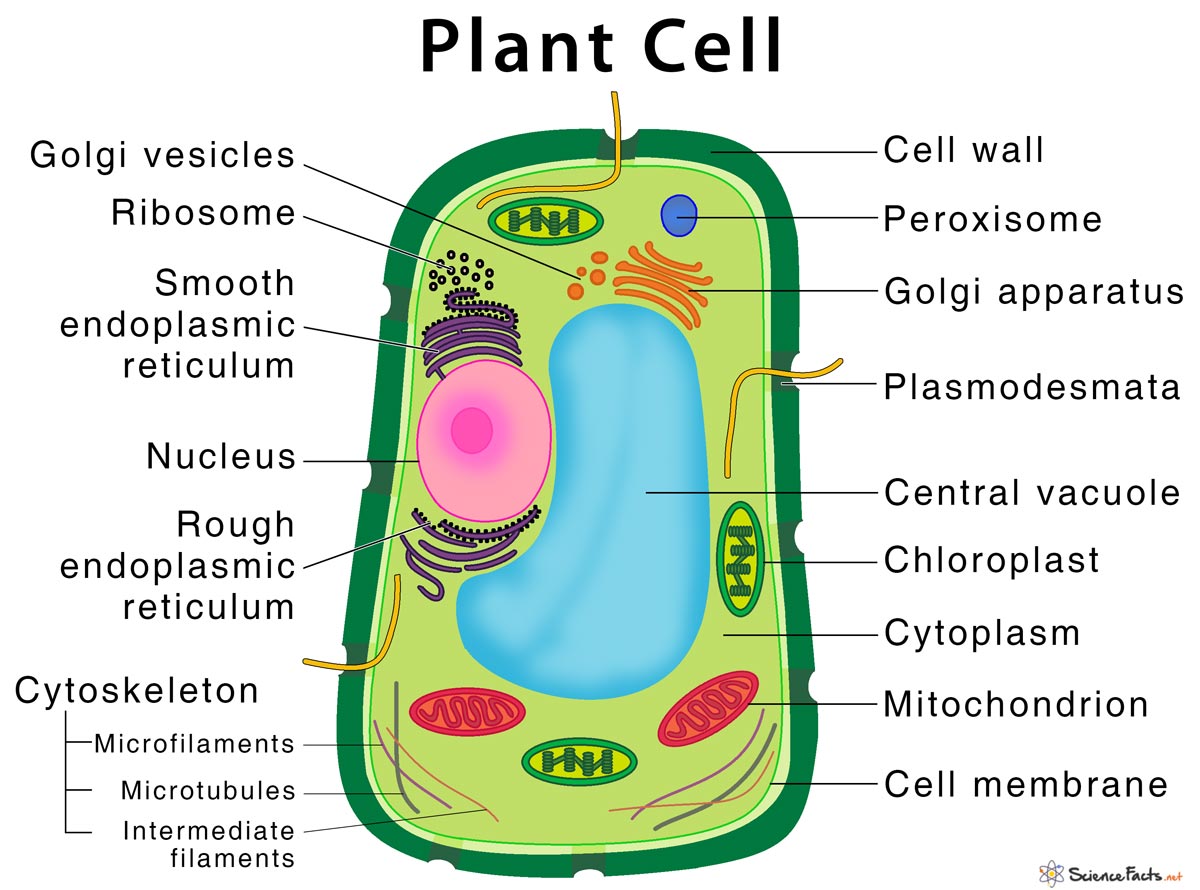- All living things are made out of cells
- Cells are made up of many smaller organelles which have their own functions to keep the cell alive
- Here are the main organelles that you need to learn about:
| Organelle | Type(s) of cells it is found in | Description and Function |
| Cell Wall | Plants Cells and Prokaryotes | Maintains the shape of the cell, serves as a barrier to protect the organelles in the cell |
| Chloroplast | Plant Cells | Converts sunlight into glucose from raw materials |
| Nucleus | Plant and Animal Cells | Contains DNA and protects it. It also sends messages (mRNA) to different parts of the cell and coordinates cell activity |
| Ribosomes | All cells | Builds proteins from an arrangement of amino acids in the structure the mRNA instructs them to |
| Mitochondria | Plant and Animal Cells | Converts glucose into ATP, a molecule of energy used in cell activity |
| Cell/Plasma Membrane | All Cells | A layer of the cell surrounding the rest of the organelles within the cell. It controls the movement of molecules in and out of the cell |
| Cytoplasm | All Cells | A liquid that fills the cell, containing molecules that are needed in cellular reactions. |
| Vacuole | Plant and Animal Cells | An enclosed storage that fills anything that needs to be kept separate from the rest of the cell. This contains food, water, and others. Plants often have a larger vacuole to store more food and water. |
| Golgi Body | Plant and Animal Cells | Packages proteins and lipids and transports it to desired destinations within the cell |
| Lysosomes | Plant and Animal Cells | A bag of digestive juices that breaks down complex molecules and unused cell parts so they can be recycled after becoming smaller components to build new parts of the cell |
| Rough ER | Plant and Animal Cells | A large system with many ribosomes that produce protein. The Golgi then collect the protein |
| Smooth ER | Plant and Animal Cells | Puts lipids together, often to make new membranes |
Differences Between Plant and Animal Cells
- Cell Wall: Only a plant cell has a cell wall
- Nucleus: The nucleus of the animal cell is typically closer to the center, while the nucleus of the plant cell normally lies closer to the side
- Chloroplasts: Plant cells have this organelle for photosynthesis, while animal cells do not
- Vacuole: Plant cells have a singular large vacuole while animal cells have many small vacuoles. The large vacuoles store food and water for future use while the storage function in vacuoles in animal cells is less significant
- Cell Membrane: Both cells have this organelle, but in plants cells, the cell membrane is surrounded by the cell wall, and in animal cells, it is the outermost layer

Diagram of an animal cell

Diagram of an plant cell
Specialised Cells
Are cells that have special structures to suit their unique functions. Some examples include...
- Root hair cells
- Located at ends of roots of plants
- Function is to absorb waters and minerals through osmosis from the soil
- Adapted to have a larger surface area
- Palisade mesophyll cells
- Found inside a leaf, beneath the epidermis cells
- Function is to perform photosynthesis
- Adapted to be packed with chlorophyll (which absorbs light for photosynthesis) and has an elongated shape to absorb and be in contact with as much sunlight as possible
- Red blood cells
- Found in blood of mammals
- Function is the transportation of oxygen to the rest of the body
- Adapted to have a flat disc shape to increase surface area to diffuse oxygen and to not have a nucleus for more storage space for oxygen
- Sperm Cells
- Found in the testes
- Function is to form a zygote by combining with an egg cell
- Adapted to have a tail for movement, more mitochondria to supply energy, and enzymes at the head of the cell so that it can penetrate the egg cell
- Egg cells
- Found in the ovaries
- Function is to form a zygote by combining with a sperm cell
- Adapted to have a cytoplasm with nutrients to allow the embryo to develop, contains genetic material for fertilisation, and cell membrane changes after fertilisation to make sure that only one sperm enters
- Ciliated cells
- Found in the surface of the trachea and bronchi
- Function is to sweep mucus upwards
- Adapted to have hair-like cilia that move mucus along the surface
Magnification
- Magnification is a process of enlargening an image of a small object that may not be seen by the visible eye to examine it
- Magnification can be calculated by Image size/Real Size
- Millimeters are the units that you will need to use for the IGCSE exams
↞Previous Topic Next Topic ↠
